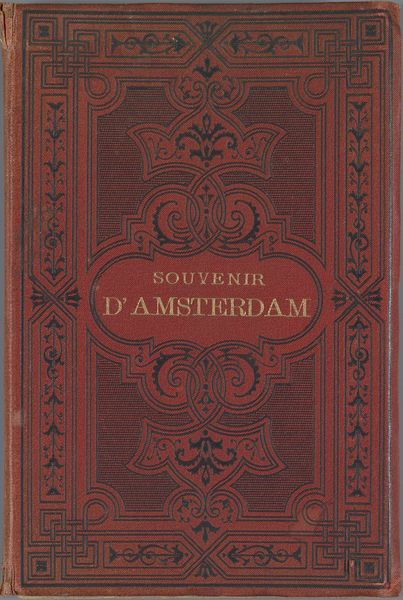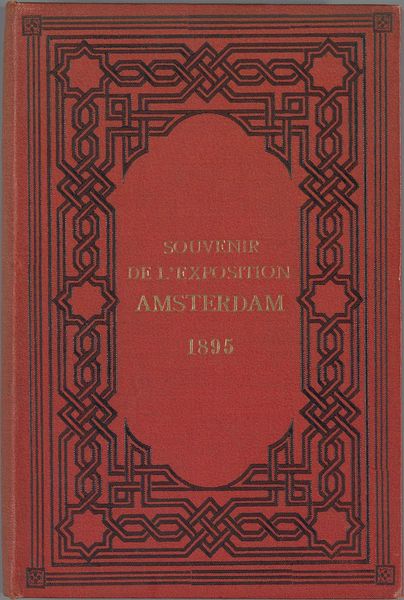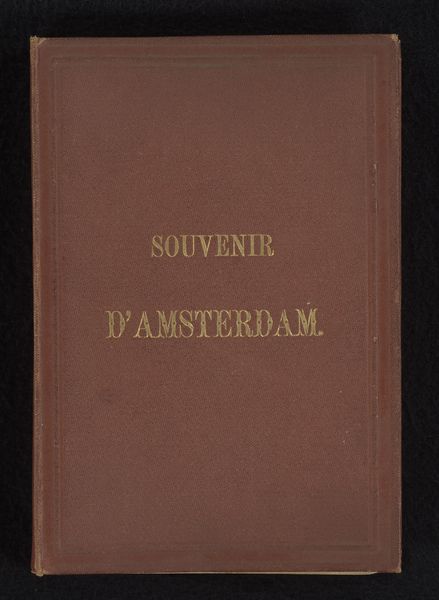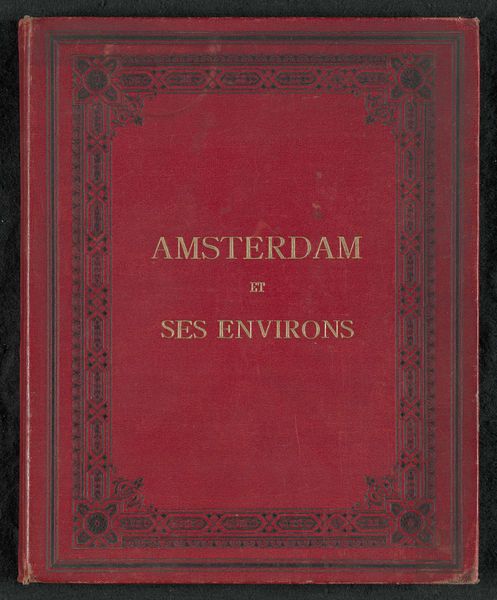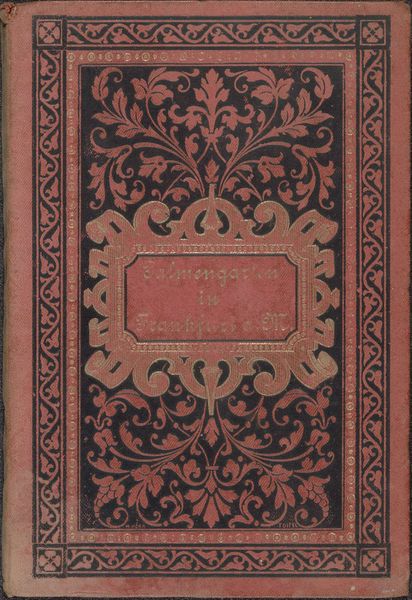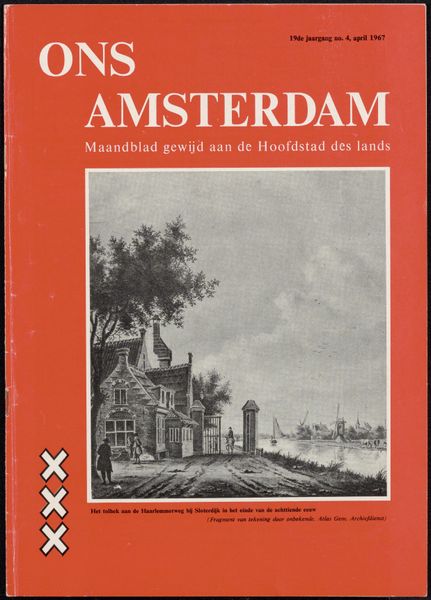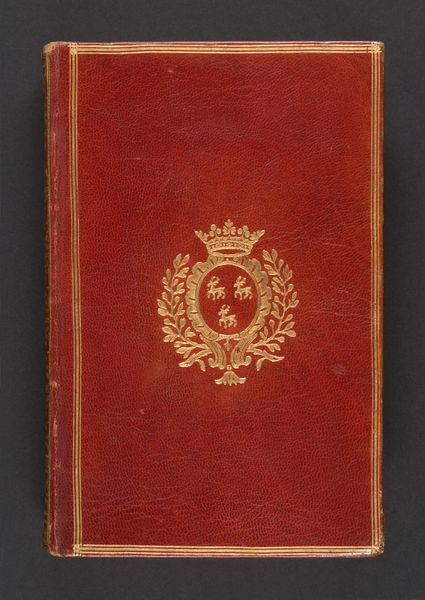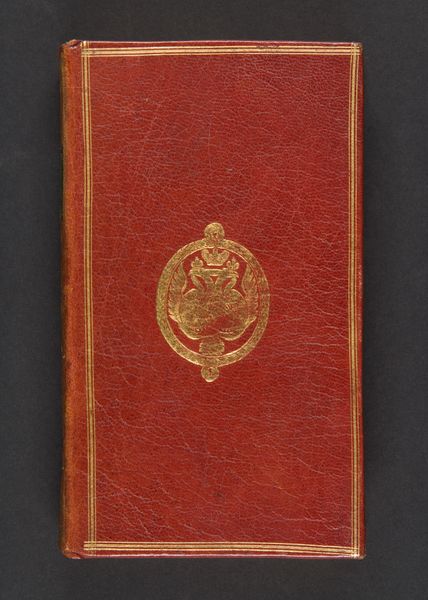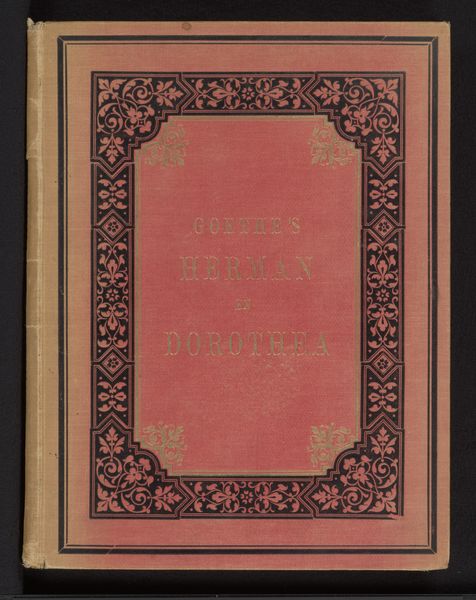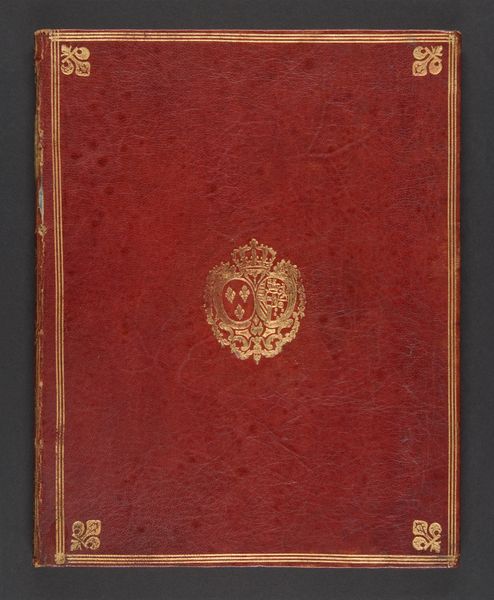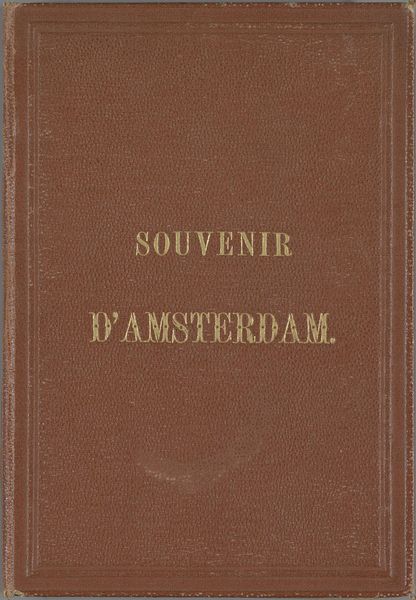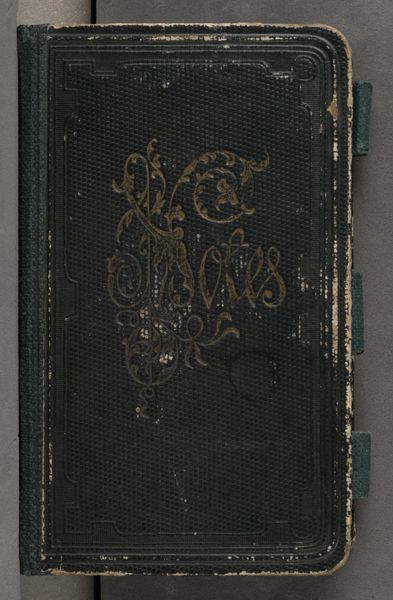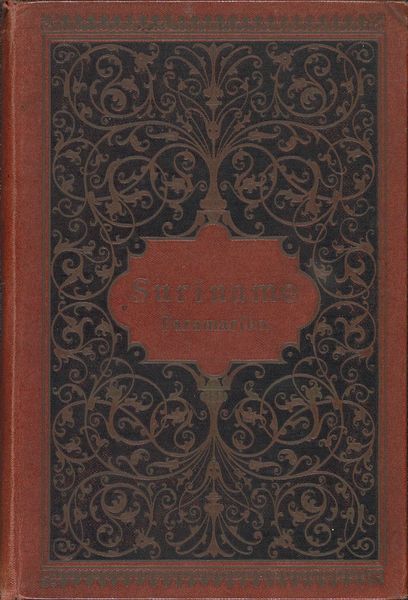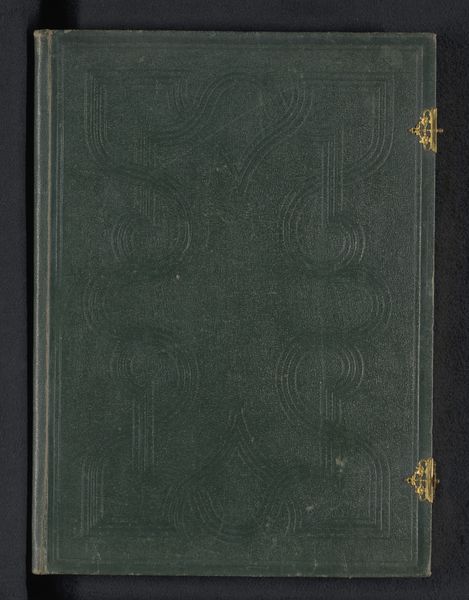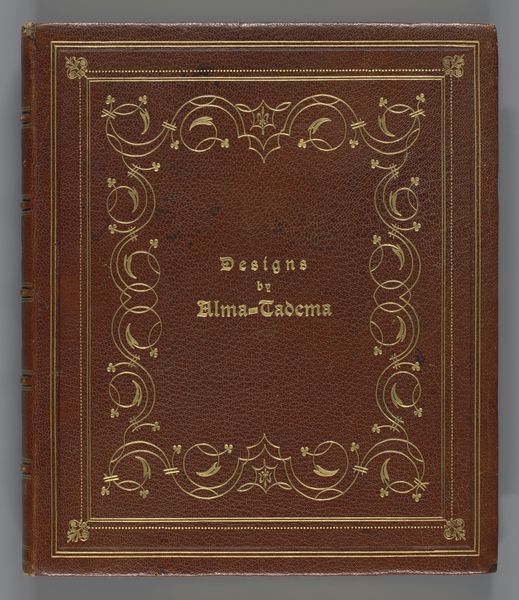
graphic-art, collage
#
graphic-art
#
art-nouveau
#
collage
#
book
#
geometric
#
decorative-art
Dimensions: height 175 mm, width 117 mm, thickness 15 mm, width 1320 mm
Copyright: Rijks Museum: Open Domain
Curator: Immediately, I am drawn to its decorative style and muted, yet rich colors. The craftsmanship suggests it's something precious, meant to be handled with care. Editor: Agreed. I'm seeing something that reminds me of the kind of curated aesthetic of the late 19th-century bourgeoisie. Before us, we have an object entitled "Leporelloalbum met twaalf stadsgezichten van Amsterdam." It appears to be an album dating between 1870 and 1900, currently held in the Rijksmuseum. Curator: The book is cloaked in Art Nouveau style; I wonder if the artist, Andries Jager, meant to present a vision of Amsterdam that aligns with that progressive turn of the century style. A modern, decorative take on a familiar city. Editor: Potentially, though the geometric repetition, which can be easily observed even from this angle, along with some vegetative flourishes, makes me wonder about the relationship between emerging ideas about industrialism and older, entrenched hierarchies. What would Amsterdam have represented at the time, culturally and politically, and how is that tension captured, maybe unconsciously, in the design? Curator: Those repeated flourishes, though beautiful, could certainly speak to constraints within that burgeoning era of production, and consumerism. Do you notice a deeper cultural connection there? The album, acting as both a document and artwork, connects present identity with past traditions through imagery and the power of place. A carefully crafted geometric design is like an ancient visual language made modern by art nouveau style. Editor: And isn't that the rub—that tension between progress and tradition always shaping societal power? We can read how aesthetics were deployed, consciously or not, to shore up that very structure. An attractive commodity concealing possibly inequitable realities. Curator: Right, the design isn’t merely aesthetic, it is cultural architecture made into a tangible art form. It’s not only decorative but almost devotional. The book's patterns mirror how humans build symbolic worlds. Editor: It’s striking to me how the object makes visible not just the face of a changing Amsterdam, but how material culture preserves the imprints of larger structural realities, if you’re attuned to reading them. Curator: I’m walking away thinking about how a simple book can tell us complex tales, stories that shift depending on where, and when, we bring our eyes and ears to it. Editor: Absolutely. I leave considering how context, and our own contemporary experiences, will always shape the narratives we uncover when we interact with these objects.
Comments
No comments
Be the first to comment and join the conversation on the ultimate creative platform.
